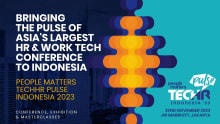Developing an agile workforce for business to thrive amid crisis

COVID-19 has brought about a shift in focus for businesses, from competition to survival.
Before the pandemic hit, the world was rapidly moving towards technologies like AI (artificial intelligence), ML (machine learning), bots, cloud computing, etc. for accuracy, ease and speed of work. Support models, such as the gig economy for expert consultation and shared economy for resource sharing, were emerging. From the talent point of view, the focus was on freeing employees to work on jobs that made use of their creative and cognitive abilities.
Today, the same advancements may continue, but with remote working. So, the focus shifts towards enablement to address issues or opportunities that will arise due to new ways of working.
The impact of COVID-19 has forced employers to relook at their workforce, most preferring to hire and retain employees who can wear multiple hats. Enabling and upskilling of employees will witness greater emphasis as most organisations will freeze or reduce external hiring and look internally to close open positions. Businesses will have to invest in developing their in-house talent to be self-sufficient. The future workforce will be multifaceted with skills that allow them to carry out a range of tasks to help their organisations sustain and thrive. It would require designing L&D (Learning and Development) programmes that expose employees to adjacent functions and facilitate cross-functional and cross-skill training. The employees will need to be self-motivated and pick up learning opportunities beyond their job role since many will be working remotely. But above all, employee agility is the attribute that employers are going to look out for. In times like these, when a change has come fast and unexpectedly, employers will value employees who can adapt and embrace challenges, instead of resisting them. Agile employees provide immense value, and their motivation to learn makes the learning process much faster when it comes to acquiring the necessary skills. As they have an agile mindset, it is much easier to train them to continually expand their knowledge as per business needs and changing environment. No person can know it all, but what organisations need today are employees who are driven and nimble.
Couple of months back, I read about the theory of ‘Integrative Thinking’ introduced by Roger Martin, a Management Guru and Dean of the Rotman School of Management at the University of Toronto, 1998-2013. The theory states - “the ability to constructively face the tensions of opposing models, and instead of choosing one at the expense of the other, generating a creative resolution of the tension in the form of a new model that contains elements of the individual models, but is superior to each.”
I started relating this theory to the capabilities that need to be developed in employees. In recent years, behavioural competencies have gained precedence over technical skills. Organisations will increasingly seek employees who are critical thinkers, who always question themselves on how they could do things differently, rather than questioning themselves on whether they would be able to do them or not.
The concept of learning has completely metamorphosed. Knowledge is the means, not the end. Those who use their knowledge most effectively will be successful. Blindly implementing learnt theories, models or framework is not enough. Agility will be about quickly grasping concepts and correlating and integrating what is learnt to develop the best possible solutions. It would mean not sticking to pre-existing processes or framework, but, instead, challenging them and innovating out-of-the-box. It would mean using the best of what exists to create a customised solution to the problem they are trying to solve.
With the change in learning needs, L&D heads need to relook at their training design, content, delivery, mode, etc. to curate content that is precise, concise and can be consumed on the go. The objective is slowly shifting from imparting knowledge to developing minds. The learners today need to absorb huge amounts of information in a limited time.
I look at self-development as a strategy. Each one of us needs to identify our core competency, which can be an integration of relevant knowledge and skills acquired from within or outside the organisation. Clients, users and consumers will be on the lookout for the best possible products, services or solutions. Agile employees possess the ability to understand quickly, adapt and deliver as per the changing needs of the customers to secure the business interests in these unprecedented times. The key is to create a unique combination of skills and then build your capabilities so that your business can thrive amid change.















